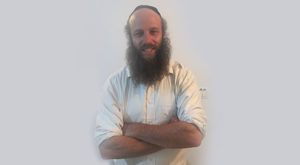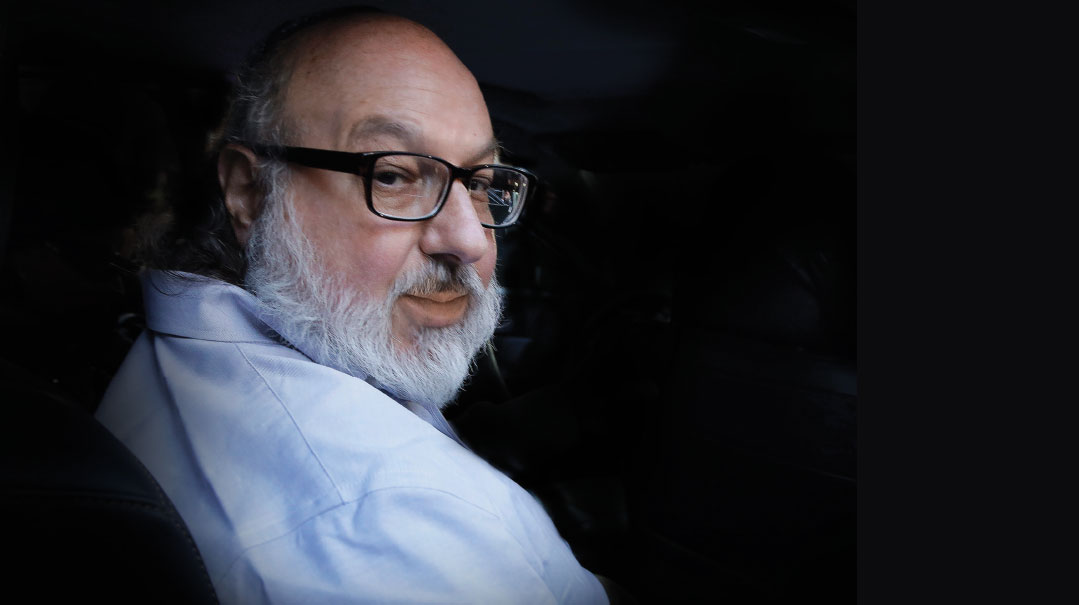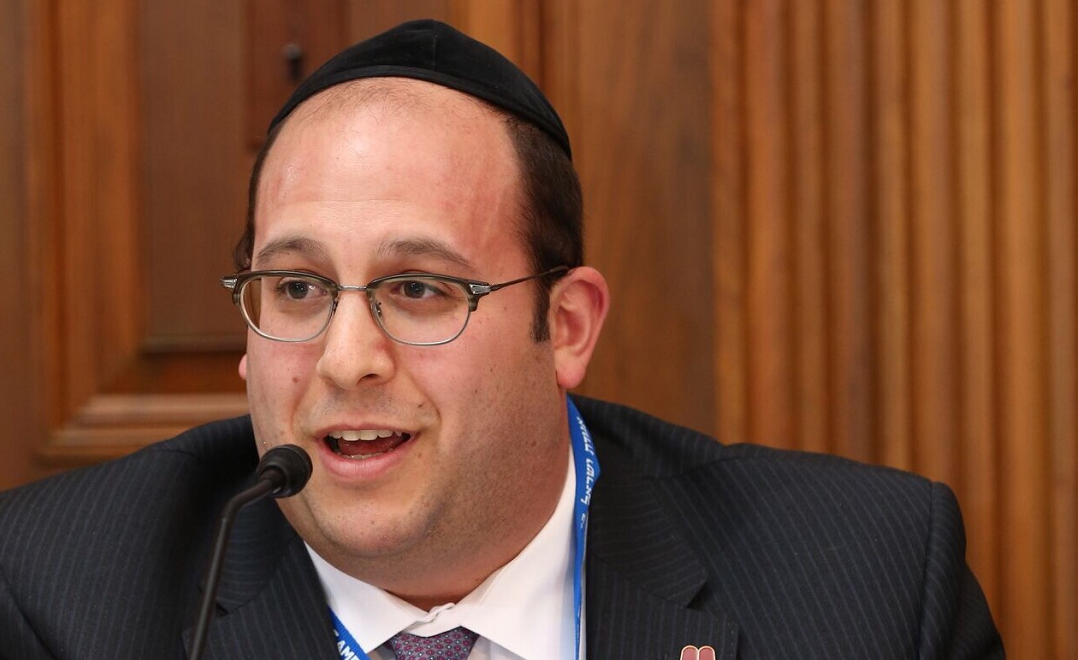Save Your Breath
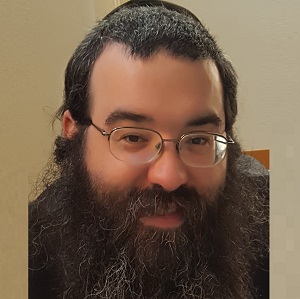
Clearing the air on vaping
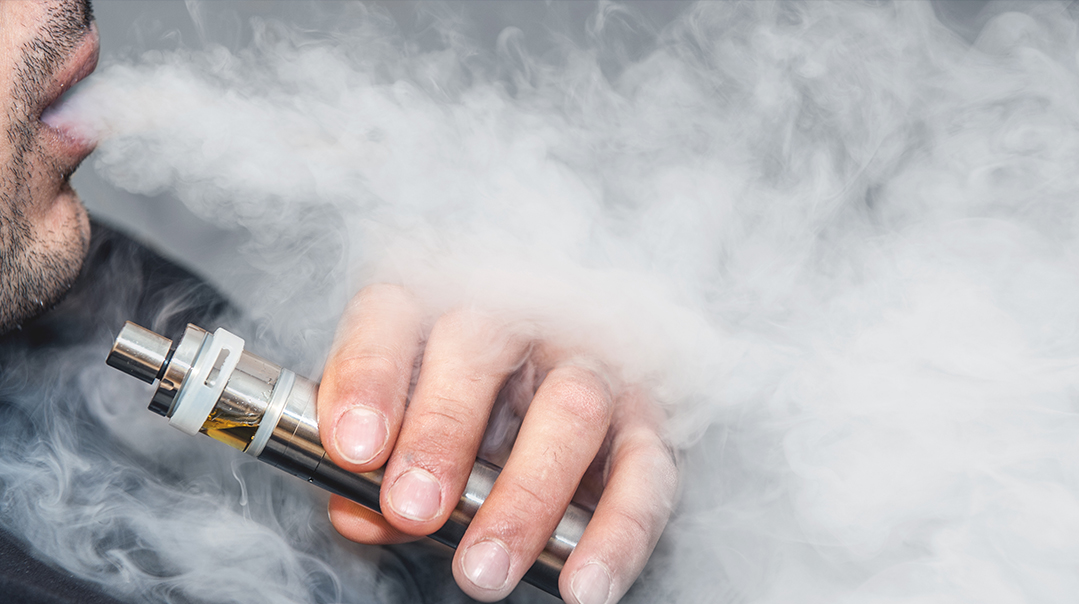
While e-cigarettes look, feel, and even puff like cigarettes, the perception of these little devices as a healthy alternative to tobacco cigarettes was thrust into the national consciousness in recent weeks as hundreds of reports surfaced about severe respiratory illnesses and even six associated deaths. With the vaping clientele becoming younger and younger, is it really a better option?
It was shortly after Tzvi’s* bar mitzvah that he began experimenting with nicotine.The chassidish Brooklyn teenager would both smoke cigarettes and “vape” — “smoke” electronic cigarettes, which are marketed as a safer alternative to tobacco. With vaping, he rarely felt the urge for cigarettes; when he did smoke, it was usually when hanging out with friends.
Eight years later, Tzvi, who is currently learning in Eretz Yisrael, says he has a hard time exercising or walking up flights of stairs.
“I have never really had a cough or other related health issues as a result of smoking,” Tzvi told Mishpacha. “But I feel like my lungs are pleading with me to stop smoking.”
Chaim,* a 22-year-old bochur who lives in Boro Park, said he never smoked cigarettes. He got hooked on vaping mint and mango-flavored Juul, the most popular e-cigarette, about a year ago, but stopped when he started getting headaches.
“I was on a 20-minute walk home one day and spontaneously pulled my Juul e-cigarette out and started vaping,” said Chaim. “When I felt those headaches coming on again I thought, ‘What am I doing to myself?’ and I just chucked it into the nearest garbage can.”
E-cigarettes look like cigarettes, feel like cigarettes, and even puff like cigarettes. The vapor is as warm as tobacco smoke and, thanks to a LED light covered with refractive plastic, the tip of the cigarette glows. By vaping nicotine e-cigarettes, the user gets the nicotine he craves without exposing himself, or other people, to the toxins that come along with tobacco smoke.
E-cigarettes are available in a variety of flavors. Some attempt to resemble traditional cigarette types, such as regular tobacco and menthol, and some even claim to mimic specific cigarette brands. A wide variety of food flavors are also sold, from the traditional (vanilla, coffee, cola) to the more unusual (“crispy cool minty taste,” “farm-fresh cherry”). Most consumers start out wanting a vapor that tastes like their brand of cigarette, but as they move away from smoking tobacco cigarettes, they venture toward the more unusual, nicotine-free flavors.
But the perception of e-cigarettes as a healthy alternative to tobacco cigarettes has been thrust into the national consciousness in recent weeks as hundreds of reports surfaced about severe respiratory illnesses and even six associated deaths.
While medical experts agree that vaping is a far better alternative than smoking, in the past few months, as the vape industry is targeting an increasingly younger clientele, studies have suggested that even use of nicotine-free e-cigarettes may harm the cardiovascular system of healthy young adults; that daily e-cigarette use — due to the liquids, flavorings, and aerosols — is associated with increased risk of myocardial infarction; that vapor from e-cigarettes may impair the cells that line the lungs; and that vaping may hamper the lungs’ ability to fend off infections.
The political response has been immediate. President Donald Trump announced last week that he’d be instructing the Food and Drug Administration to develop guidelines to ban all flavored e-cigarettes, with the exception of tobacco flavor — since tobacco e-cigarettes are considered a tool to help people quit smoking.
In New York, Governor Andrew Cuomo is pushing to enact an emergency ban that would go into effect in as little as two weeks. That ban, too, would not impact tobacco flavors, although it adds menthol to the list of exceptions. The American Lung Association called it insufficient because of the menthol exclusion.
The governmental response has been bewilderingly rapid, particularly compared to the decades it took to tackle the tobacco industry, and the vaping industry is complaining.
Zecharia Peker, owner of the Magical Mist Vape Lounge in Monsey, said that the industry has been around for 16 years without reports of illnesses. What, he wondered, has happened now?
“Take a look at the figures,” says Peker. “Sixteen years. Over 13 million people vaping. Until August 20, not one person was reported to die or get sick from it. Millions of people have been using something and nothing detrimental happened. All of a sudden, during a period of three weeks, something bad happens, and it’s only in a cluster of places.
“What is the possibility that it has anything to do with what the other millions of people are doing?” he questioned. “What’s the logical conclusion? If someone gets food poisoning, are you going to conclude that nobody should eat food anymore? The conclusion should be: Watch where you’re getting your stuff.”
E-cigarettes come in a large variety of styles and quality. Some look like regular cigarettes and are usually meant to assist smokers kick the habit. Others look like nargilehs, or the hookahs smoked in Arab and Far Eastern countries, with an extended pliable pipe for inhaling the vapor. Still others look like USB sticks, lighters, or pens.
Early variations allowed smokers to insert tobacco into the device and inhale it rather than smoke. More modern versions allow users to insert — or mix — virtually any flavor, such as chocolate, gummy bear, bubble gum, cotton candy, or fruit. Companies that manufacture these flavors have been criticized for targeting a youth clientele.
More recently, Juul Labs began producing closed pods that are prefilled and contain chemicals to improve vaporization. The company rapidly ascended the ranks, and today Juul controls about three-quarters of the vaping market.
It Helped Me Quit
The vaping customer base is about 13 million in the United States alone and has become entrenched in yeshivos. While about one in four high schoolers said they use e-cigarettes, conversations with parents indicate that the rate may be even higher in certain yeshivos.
“To many, many yeshivah guys, e-cigarettes is the ‘thing,’ ” one parent tells Mishpacha. “My son was telling me that in some mesivta camps, there really is no way to escape. You’re a loser if you don’t have one.”
But if bochurim are going to smoke, aren’t e-cigarettes better? Tzvi says he started both nicotine cigarettes and e-cigarettes at about 13 or 14. Vaping helped him limit smoking, and after a while, to quit entirely.
“I can’t recall ever finishing a pack of cigarettes in a day because I felt that the vape was sufficient enough most of the time, and I didn’t feel the need to smoke real cigarettes,” he says. “Up until about seven months ago, I still had a few cigarettes a day, mainly because I was around others who smoked. I then decided to stop smoking and only vape, mainly since I enjoyed using the Juul more than smoking — and also because I couldn’t afford both. Now, I can’t even think of smoking.”
Tzvi admits, however, that vaping was a double-edged sword for him. It helped him stop smoking regular cigarettes, but only because he was using Juul, which is much stronger than regular vaping products.
“Unless you want to solely stop smoking cigarettes, e-cigarettes aren’t going to help you quit your nicotine addiction,” he says. “Because in my experience, they are much more addictive than regular cigarettes, mainly because they’re easier and more accessible. You don’t have to go outdoors to smoke, you don’t have the bad aftertaste, and, of course, you don’t smell disgusting afterward.”
But he feels it’s also taken a toll on his health.
“I don’t believe vaping is even close to how bad smoking regular cigarettes are for you,” he says. “But it definitely still has an impact on my lungs. I’m really not fit. I struggle to exercise, and I can barely go up a few flights of stairs without losing my breath. I definitely feel healthier since I quit regular cigarettes, but my lungs are still pleading with me to stop vaping.”
The allure of the flavors, however, are too difficult to overcome, despite the negative side effects. “Of course, even as I’m saying this, I’m ‘smoking’ my Juul.”
Chaim says he never smoked conventional cigarettes and adopted vaping while learning in a yeshivah in Eretz Yisrael “as a habit.” Other American bochurim in his dormitory would vape, and so he decided to join in.
“I started at around 17, but not all the time,” he says. “Then I stopped and didn’t touch them for a long time. But this year I got the Juul, which you can refill with flavor pods and which is more seamless than the ones you use and throw out. But I started getting headaches so I quit.”
Chaim says he never got addicted to vaping. “I just felt like I wanted to smoke it whenever I had it near me and sometimes when I didn’t. I was able to survive when I didn’t have it, though.”
Chaim and Tzvi disagree on how effective a government ban on vaping — which includes all flavors except tobacco — would be.
As someone who has been both a smoker and a vaper, Tzvi says he believes a ban will chase a lot of people to regular cigarettes, if tobacco flavor is the only one available to them.
“One of the main perks of e-cigarettes is that you can get them in a variety of flavors,” he says. “Tobacco flavor will remind you of cigarettes.”
Chaim says, however, that if vaping products did not have the fruity flavors, only tobacco, he would have been “much less likely” to embrace it in the first place. This discussion has been challenging for health authorities ever since reports began emerging of pulmonary illnesses in people using the devices. There have been about 450 reports, including six deaths.
Experts have so far not been able to pin the blame on any specific ingredient in the vaping product. Some have suggested it is the vitamin E oil used to liquefy the fruit or flavors sources while others fault THC, an ingredient that creates the “high” feeling in marijuana, that has lately been added to vaping products.
Zecharia Peker, on the other hand, credits e-cigarettes for saving the lives of 6.6 million people who would have otherwise smoked and succumbed to the sad statistics associated with tobacco.
“Most people, I would say this is about 95 percent, like flavors such as the berry flavor,” Peker says. “That’s what gets them to quit cigarettes. This is the bread and butter of adults as well. We would love for teens not to be involved in this, and people who sell this have to be responsible and not sell to teens, as with anything else that is enjoyable and attractive to adults. But flavors are what attract people to try these over cigarettes.”
Who’s to blame?
Those in the vaping industry have been casting around for blame over the reports. Some say it was the government seeking to exploit the crisis since ending vaping has a moral imperative. Others say the tobacco companies, who have lost revenue, are behind it. Some blame both, noting the government can collect much higher taxes from cigarettes than from vaping products.
There are those who even claim that Juul, the leading e-cigarette company, is planting these reports so that the government will impose such expensive oversight that it will be the only remaining company in the market able to afford it. Those making this contention point out that the parent company of leading cigarette maker Marlboro has a 35 percent ownership of Juul.
A former heavy smoker himself, Peker said he started his business about seven years ago when he was seeking to kick his three-packs-a-day habit. He utilizes the business to help his talmidim do the same. He says that responsible sellers would never mix flavors or add anything that is non-digestible. He also does not sell to teenagers.
“I’ll have to send away more than 800 customers when the law raising the legal vaping age from 18 to 21 goes into effect in November,” he says.
For the past few weeks, he has been inundated with customers calling to inquire about the safety of his products.
“It doesn’t mean the facts are wrong, it means the way they skew it is wrong,” he says. “I myself am my own biggest customer, and for some reason, this doesn’t scare me one bit. It’s clear that this is agenda-driven and about sensationalism and about exploiting this situation.”
He insists that there’s no danger in vaping since all the reports are “clustered” to a small area and no illnesses have been previously connected to it.
“Some people don’t agree with oranges, some people don’t agree with parsley, some people don’t agree with chicken,” he says “So you just don’t eat it. Do the math. Is it related to vaping, or is it related to a possibly tainted, toxic liquid obtained from unscrupulous and unethical sources?”
Peker personally believes the culprit for all the illnesses is vitamin E acetate. He only sells Dropsmoke flavors, which he says are the only ones with a hechsher, and among “the best and most consistent drops on the market” since they use only natural ingredients.
One prominent physician, however, dismisses all these arguments.
“Wait another couple of months, and it will all come out,” says Dr. Robert Adler, a pediatrician with one of the largest practices in Boro Park, adding that virtually no credible study has been done to test the safety of vaping. “I just haven’t seen and can’t imagine that anything you’re inhaling is going to be good for your lungs. Now, it’s coming out even more.”
Dr. Adler recalls how during his residency in the 1980s, doctors were prescribing vitamin E oil to treat eye damage in babies who had been prenatally exposed to oxygen. That practice was abruptly stopped when it was associated with a fatal intestinal inflammation.
“It’s interesting that the same vitamin E that caused deaths in babies as an oil is now in an inhaled form causing lung damage in older people,” Dr. Adler says.
He also noted that the illnesses have been reported in 36 states, not the small cluster that has been alleged.
Questioned about the wisdom of banning a product with proven benefits of helping people stop the much more unhealthy practice of smoking, the veteran physician says it’s a mirage.
“I’m not so sure — the people I see in shul vaping a year ago,” he says, “today they’re back to smoking.” He adds, “You walk into yeshivos, and you see all the vaping products on the shelves. This is a far more widespread problem than we thought.”
Dr. Adler says he will wait until more concrete information is available over the next few months before instituting changes in his medical practice. But in the meantime, he will be urging his patients to avoid e-cigarettes.
“Obviously, we’re going to be asking people, not only ‘are you smoking?’ but also if they’re vaping,” he says. “I don’t want to be examining 20-year-old patients with 50-year-old lungs.” —
*Names have been changed
(Originally featured in Mishpacha, Issue 778)
Oops! We could not locate your form.





